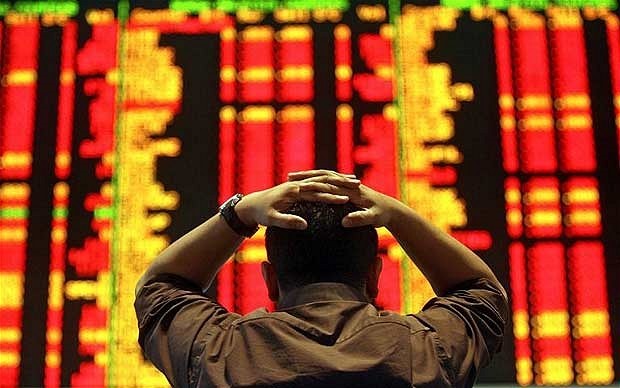By Bradley Dick ’16, Perspectives Editor and Business Manager
This past Monday, now known as “Black Monday” in Shanghai, was the single worst day of trading around the world since 2011. Chinese equities dropped 8.5% nearly causing their stock market to crash. This world-wide market fiasco was felt at the NYSE.
After a generally rocky August, New York stockbrokers were awakened Monday with Dow Futures already well into the red. Within an hour of opening bell, the Dow Jones fell nearly 600 points. It only got worse from there: Dow Jones, S&P 500 and NASDAQ continued to fall throughout the day. To complete the fiasco, the Dow Jones fell over 1,000 points in just two days (the largest two day fall since 2011). The events that occurred over these two days and the world-wide marketplace scare indicate the importance of raising the overall interest levels in the marketplace. This needs to be done to stabilize the economy as well as prepare for the next recession.
Shanghai’s market troubles are only one of the many reasons that the Dow Jones, S&P 500 and NASDAQ had such a rocky week. Quantitative easing has also had a large impact on the unstable market. Quantitative easing is a policy used to stimulate the economy when the standard monetary currency is ineffective. Currently in the United States, this translates to a government buyback of US issued bonds.
When the government buys back its bonds, it gains more control of the marketplace. Consequently, the government is able to lower interest rates seemingly overnight causing many to buy into the market. With all this extra cash flow, the economy seems to be doing well. However, this is just smoke and mirrors. If you look a little bit deeper into the recent market success, you will immediately see the instability.
This is not the first time low interest rates have caused havoc. Just ten years ago the Federal Reserve issued unprecedentedly low interest rates to help boost the economy. Big banks like JP Morgan used these low interest rates to lend to one another, ultimately determining the cost of credit.
In the early 2000s banks issued such low credit that millions of people decided to refinance and buy new homes with huge mortgages. However, these mortgages were subprime. It only took a few banks and investors to discover that it was possible to short the subprime mortgages for profit. Ultimately a result of low interest rates, these subprime mortgages have caused everlasting effects in the market place.
When the stock market officially entered into a recession, the low interest rates were, for the most part, left to help get out of the recession. But without high interest rates, recessions have much more detrimental effects. High interest rates help to diminish the effects of a recession on a marketplace, while low interest rates provide absolutely no backing or security for the economy.
Dr. Ben Bernanke, former Chairmen of the Federal Reserve, believes that “If the Fed were to try to keep market rates persistently too high, relative to the equilibrium rate, the economy would slow (perhaps falling into recession), because capital investments (and other long-lived purchases, like consumer durables) are unattractive when the cost of borrowing set by the Fed exceeds the potential return on those investments. Similarly, if the Fed were to push market rates too low, below the levels consistent with the equilibrium rate, the economy would eventually overheat, leading to inflation—also an unsustainable and undesirable situation.” While Bernanke believes high interest rates would slow down the economy, many conservative economists believe the risk of unemployment and slow growth is outweighed by the security and protection it would provide the economy.
Lower interest rates and quantitative easing are just the stepping stones for government interaction in the market place. When the government feels that the economy is in down turn, it interacts in the marketplace and starts buying back the monetary values which ultimately gives it more control.
The Fed must raise the current interest rates and discontinue its current quantitative easing practices. This will allow the marketplace to return to a stable and secure level. Once the market reaches this secure point, true economic growth will begin and the dangers of unemployment will be forgotten.
Sources:
http://www.wsj.com/articles/global-stocks-stabilize-after-u-s-data-commodities-rally-1440748637
https://www.google.com/webhp?sourceid=chrome-instant&ion=1&espv=2&ie=UTF-8#q=Dow+jones
http://www.brookings.edu/blogs/ben-bernanke/posts/2015/03/30-why-interest-rates-so-low
http://www.huffingtonpost.com/georges-ugeux/this-is-the-right-time-fo_b_8054114.html
http://www.economist.com/blogs/economist-explains/2015/03/economist-explains-5
Image Source:
http://i.telegraph.co.uk/multimedia/archive/02012/stocks_2012252b.jpg




